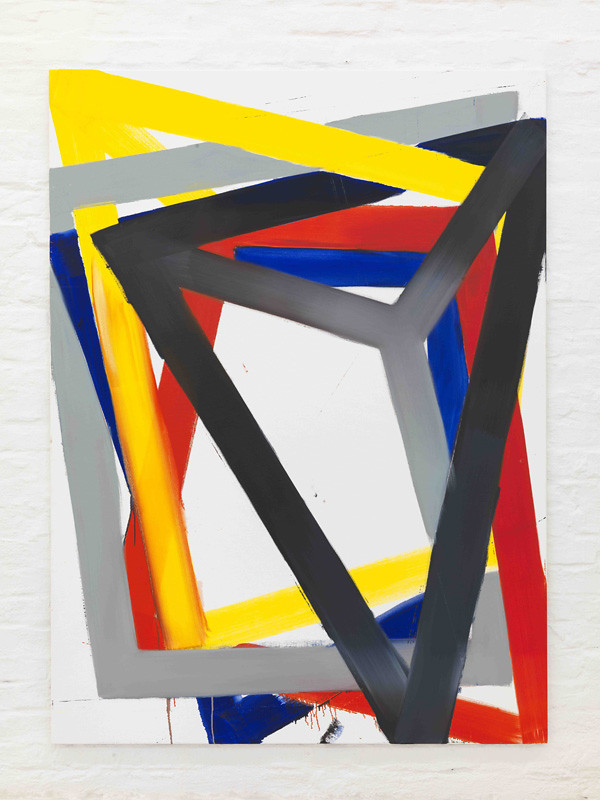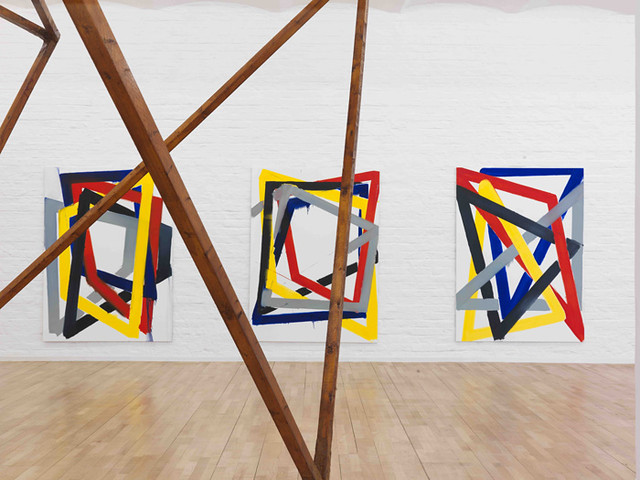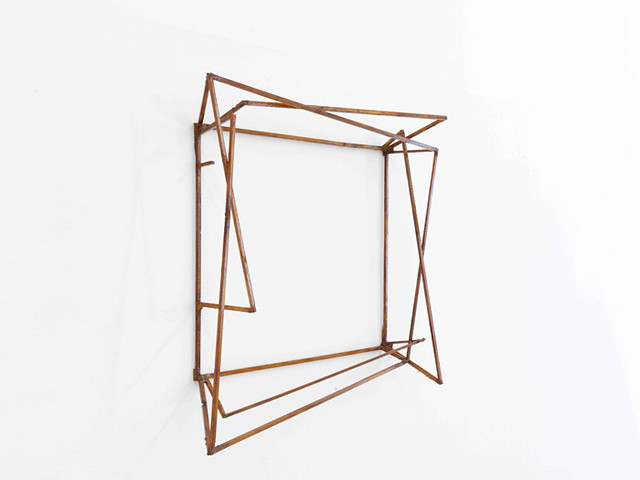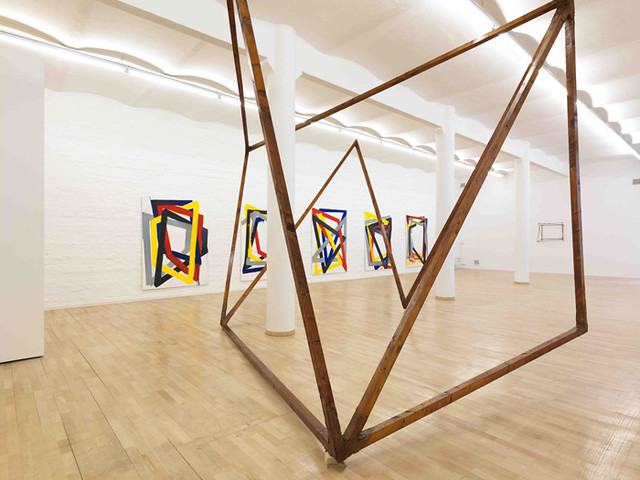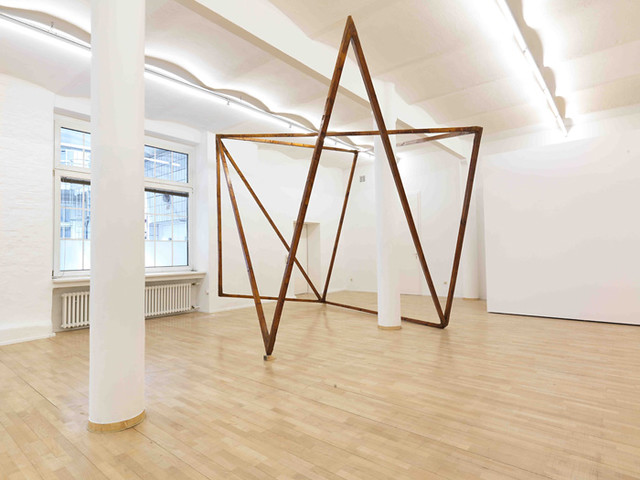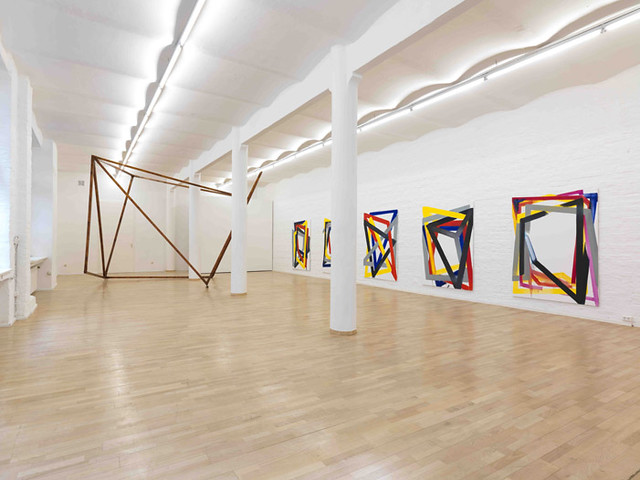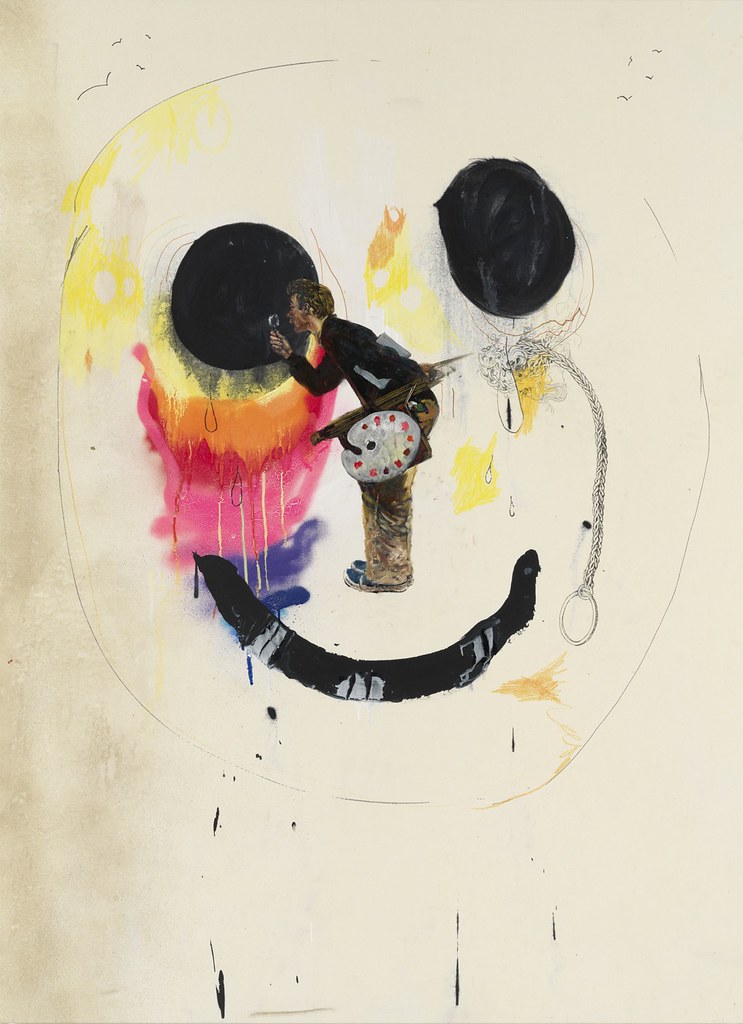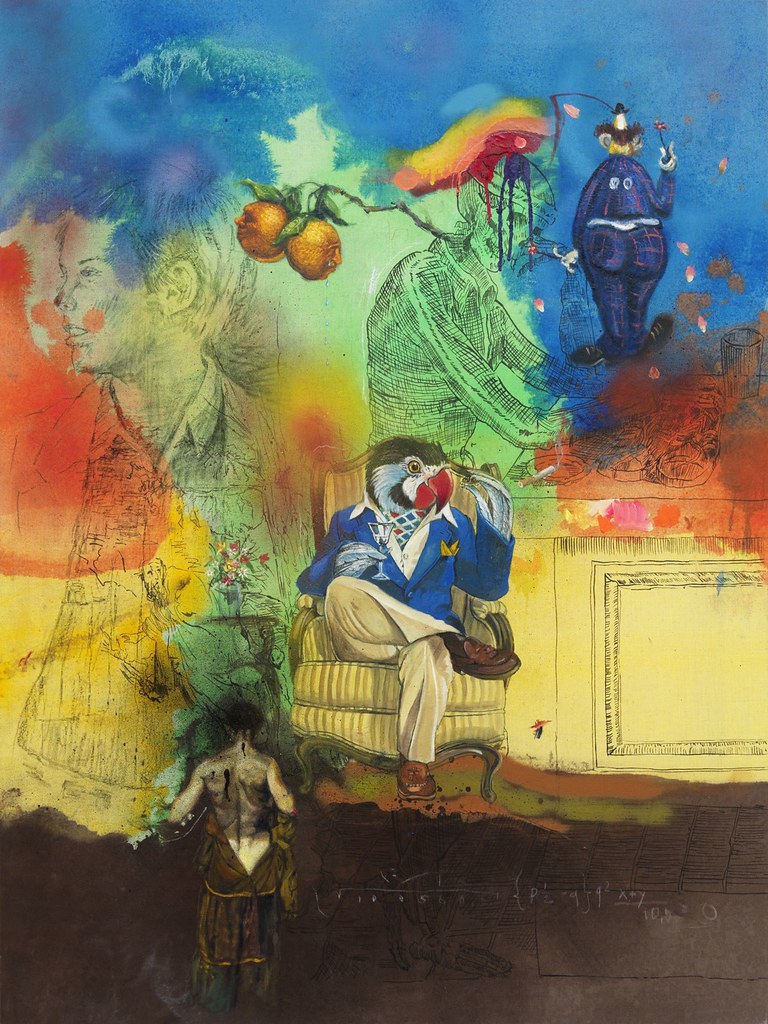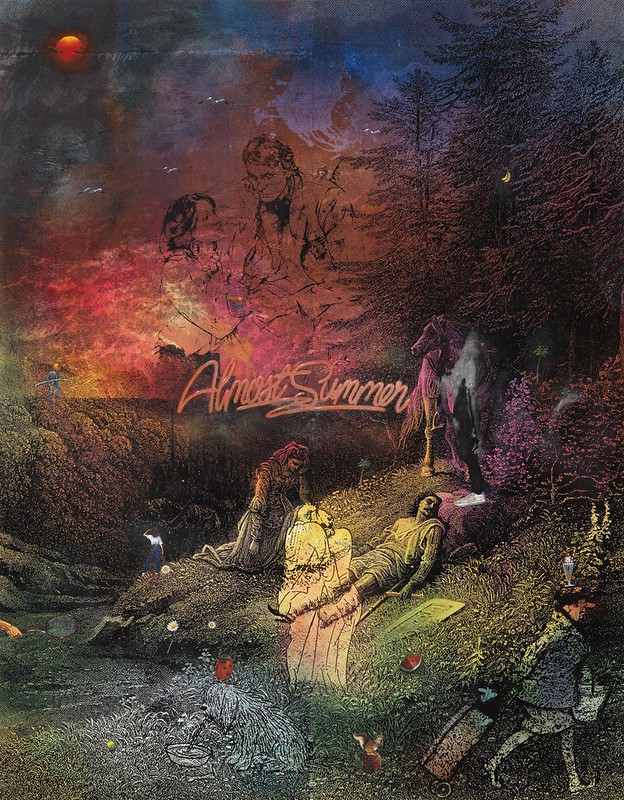
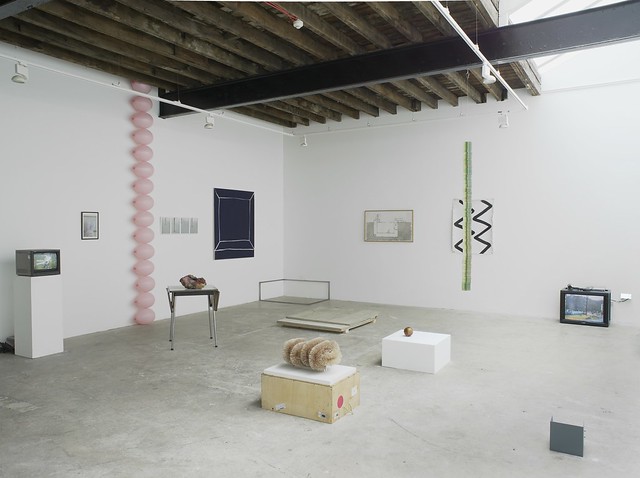
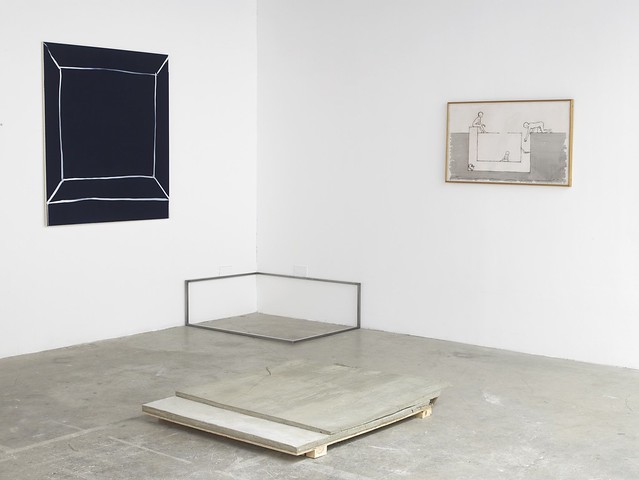
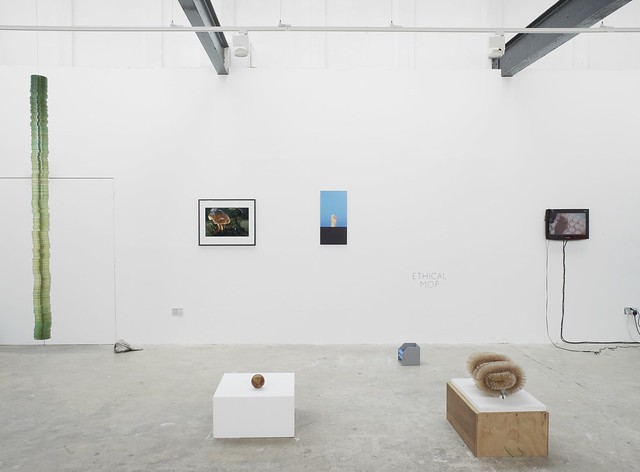
all images: Installation Views 'We Love You', Courtesy Limoncello Gallery, London
Last Wednesday saw the opening of East London gallery Limoncello’s new space in the Russian Club’s studios, Dalston. Taking a big step up (in terms of floor space if not geography) from their former shoe-box premises, directors Rebecca May Marston and Rosa Tyhurst have expanded with gusto into their bright, beautiful new space with a raucous group show – ‘We Love You’ – for which gallery artists have been invited to show one piece alongside a piece that has served as inspiration and another from a ‘hot tip’ emerging artist. Unsurprisingly, given the breadth of the Limoncello roster, the result is a pleasingly motley affair with several large sculptural work such as John Frankland’s precarious and gently comic tower of stacked pink balloons (2012) or James Torbles’ ‘Folded Concrete’ slab (2012) vying for immediate attention amongst the assembled video, photographic, painted and printed works.
Although a sense that the show was crowded doubtless owed much to the spectacularly busy opening night where the crowds of young ‘creatives’ managed to make even the commodious premises seem claustophobic. Given space to breathe, the ‘We Love You’ concept allows for revelatory moments of clarity and coherence. Yonatan Vinitsky’s series of photographs, ‘T-R-A-P’ (2011), articulates a strong preoccupation with solid form and colours, repetition and re-configuration, echoed in the double-sided Anatal Biro composition (1950) and beautiful ‘Morgen Rot’ and ‘Abend Rot’ (2000) screenprints by Rupprecht Geiger that bookend it. Deceptively simple, Jack Strange’s levitating tower of stacked CDs (‘Blank Maxwell’ 2012) is shimmeringly, liquidly beautiful – a magpie reminder of the over-looked glamour of the banal and quotidian.
‘We love you’ is an appropriately upbeat declaration from this East End upstart whose expanded new space is indicative of its (deservedly) growing and increasingly established status on the London art scene. And good luck to them. Limoncello, we love you too!

